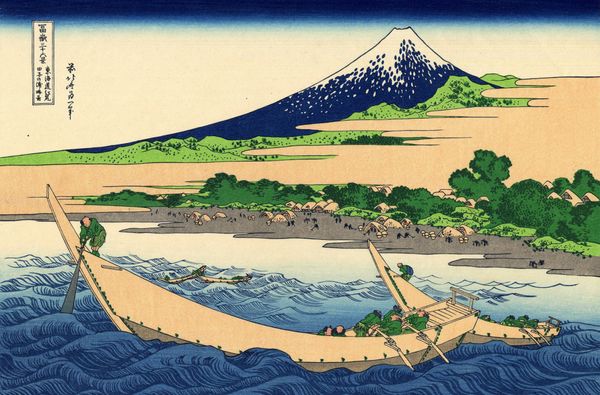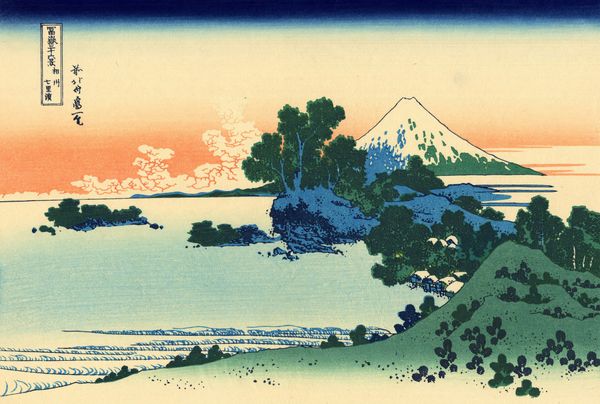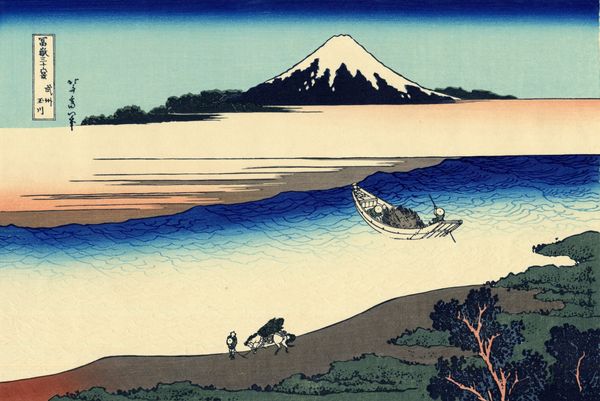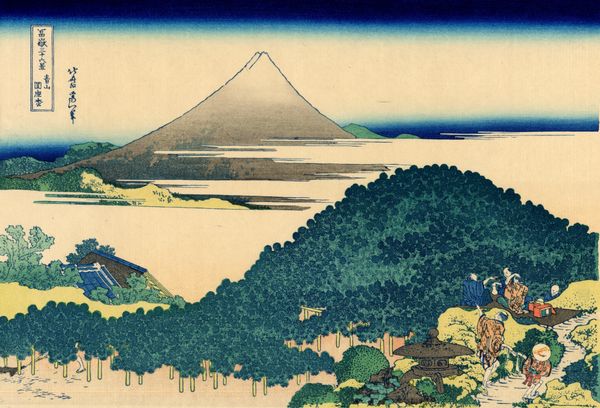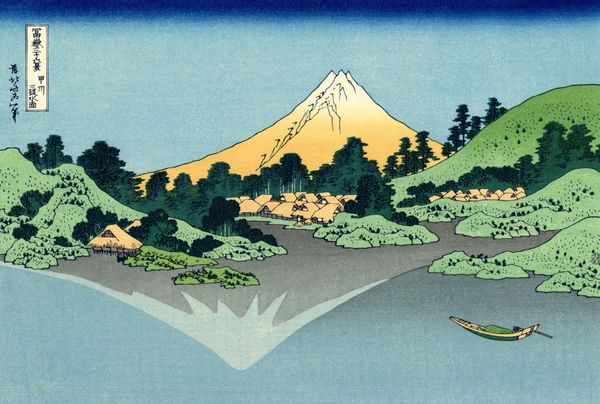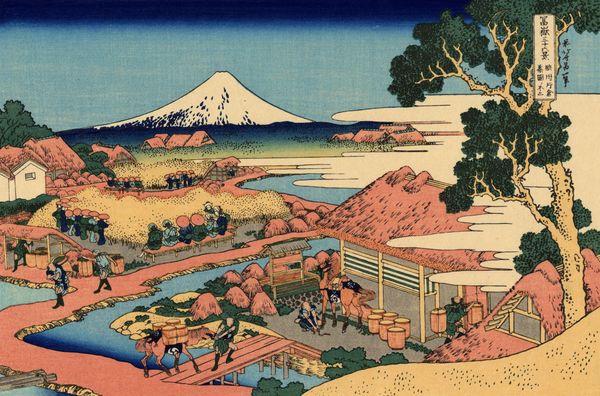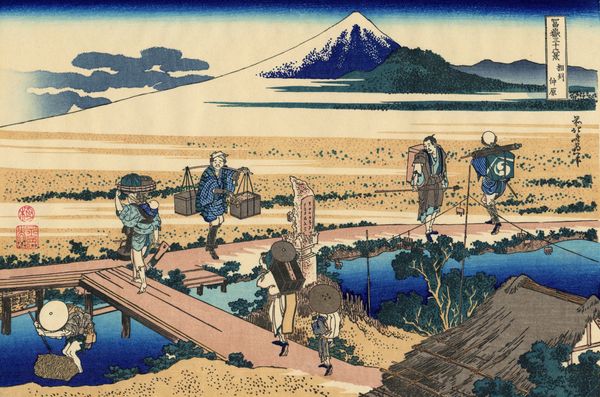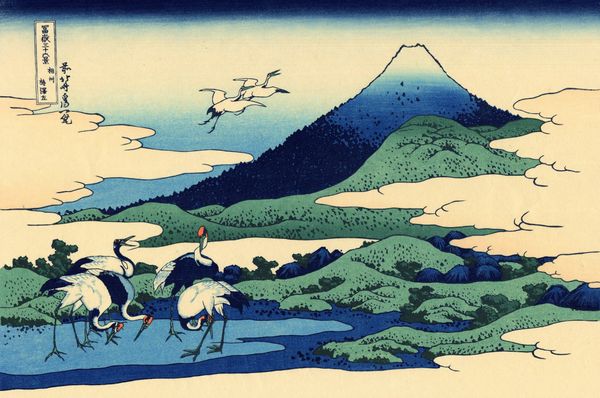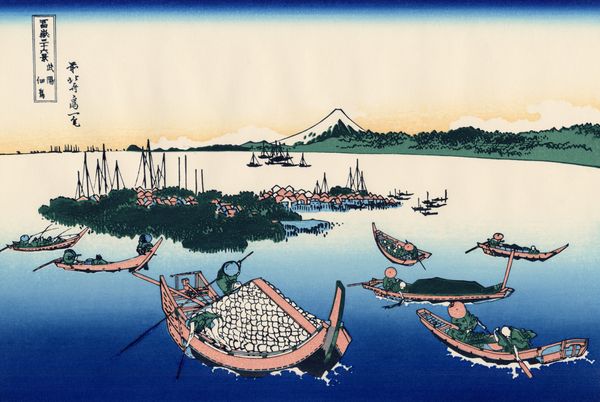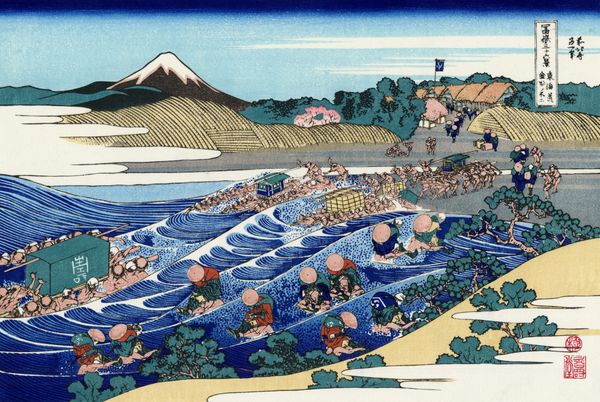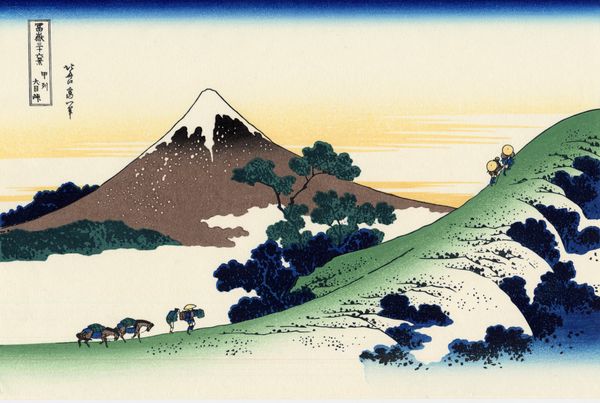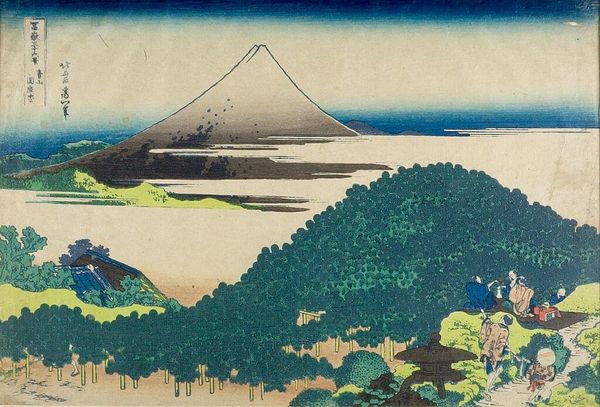
print, woodblock-print
#
sky
# print
#
landscape
#
ukiyo-e
#
woodblock-print
#
mountain
#
naive art
#
orientalism
#
water
#
cityscape
#
watercolour illustration
Copyright: Public domain
Curator: This is Katsushika Hokusai's "Dawn at Isawa in the Kai province," a woodblock print from his series "Thirty-six Views of Mount Fuji," presently residing here at the Guimet Museum. Editor: It’s immediately striking, isn’t it? There's a deceptive simplicity to the composition—that looming Mount Fuji juxtaposed against the bustling village feels almost dreamlike, a silent observer watching the day begin. Curator: It is dreamlike, and this aligns perfectly with ukiyo-e, a genre born out of the Edo period's burgeoning merchant class. Ukiyo, meaning "floating world," captured the ephemeral joys and beauties of daily life for these new consumers. It mirrors society's shifting gaze and questions who truly participates in shaping public history. Editor: Floating indeed! It’s fascinating how Hokusai captures not only the geographical specifics of the location, but also embeds culturally significant emblems. I can sense how the silhouetted mountain, almost a spiritual beacon, serves as an enduring emblem of stability against the transient human activity. The village and its figures almost kneel at the base of Fuji, reverent. Curator: Absolutely. And the colours are deliberately chosen. The gradation of the sky symbolises progress, while it can even embody resistance towards any strict cultural interpretation, allowing viewers a freedom in reading, acknowledging art's dynamism alongside rigid frameworks of gender, power, and nationhood. The figures could well be day laborers contributing towards society, perhaps ignored otherwise. Editor: Precisely. Look how those thatched roofs, rendered in earthy tones, connect us to the people while reflecting nature's cycle of constant return. The print’s colour symbolism draws heavily on centuries of inherited aesthetic preferences. Notice how water becomes a conduit linking material activity and transcendent peak. Curator: Considering the piece's probable audience and historical context, there's an inherent socio-political commentary subtly woven throughout the landscape too. So perhaps we could consider that the mountain almost observes their actions, offering us as observers the chance to examine this slice of early morning community activity too. Editor: I’m struck, finally, by the enduring power of symbols to traverse cultural divides, connecting us not just visually but emotionally across centuries. Curator: Yes, this dawn scene presents not only an opportunity to consider a unique community and geography, but a unique chance to address power structures throughout the Edo period and art itself.
Comments
No comments
Be the first to comment and join the conversation on the ultimate creative platform.
